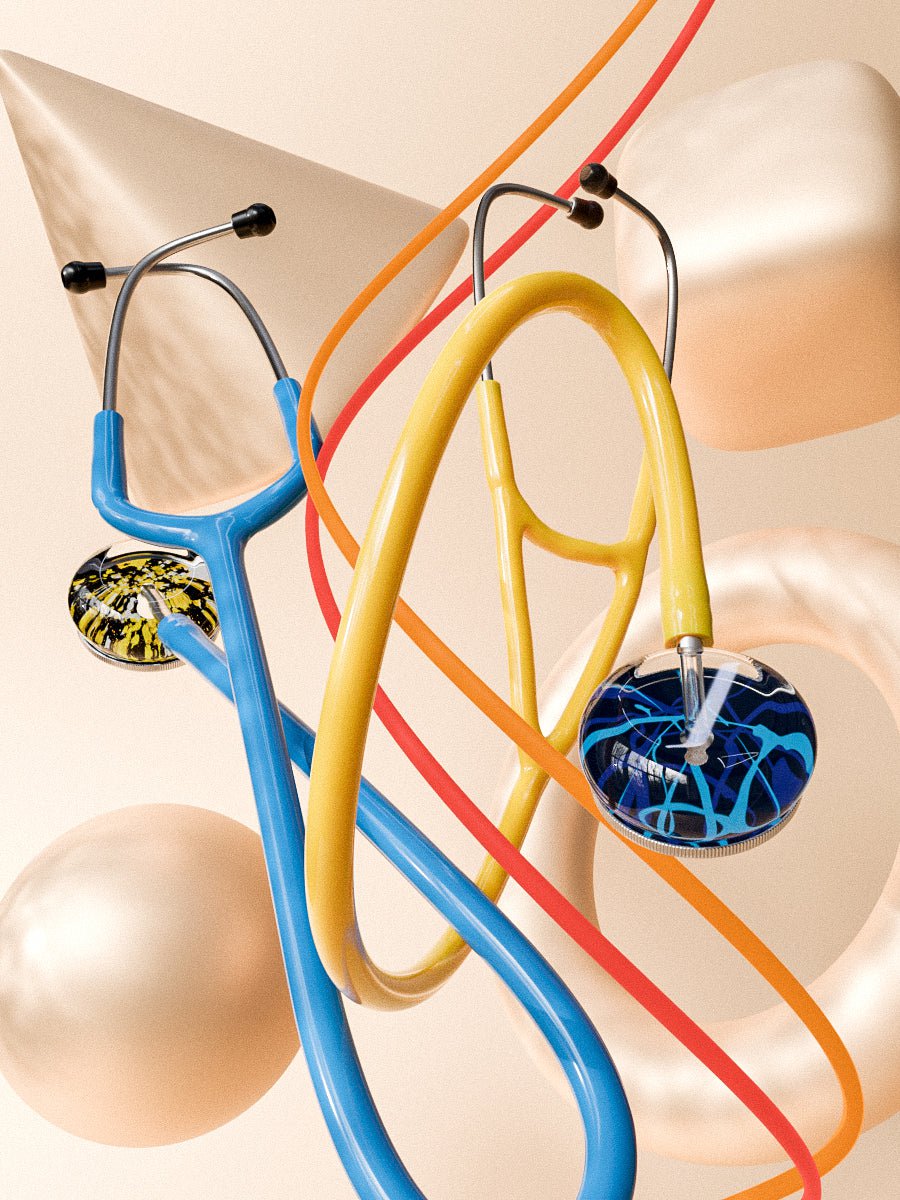What does an anesthesiologist use a stethoscope for? It might seem like a silly question to some, but it will likely be what your patients are wondering. After all, if you're going in for surgery and the doctor is using this strange device on you before they put you under, then what is it doing? This article will give you some insight into why the medical professionals need these devices so much! If you want to know how often you should replace stethoscopes, check out our blog article with that information.
Anesthesiologists use stethoscopes to listen to a patient's heart and lungs. This is often done before the patient is put under for surgery. The anesthesiologist can also use the device to check for any breath sounds in places like your nose and mouth. They will typically listen with one ear, using the other ear as a reference point.
The sound of the patient's heartbeat is transmitted through the diaphragm onto the chest, and then into the ear canal. This can help the anesthesiologist determine if the heart is beating normally. The sound of breath can be heard deep in your chest, and it helps the anesthesiologist know if you are breathing well enough for them to proceed with surgery. If you work in anesthesiology, you need to be sure that your stethoscope is always in tip top working order. When you're ready to purchase a new one, be sure to check out our Ultrascopeinventory!
Auscultation of lung sounds can be done by placing one end of the scope on either side of an open mouth or nose.
Bronchial breath sounds are heard when you place your scope on one side over an open mouth or nose.
If there is a significant difference in air flow between both sides, this could point to a problem with breathing in that area of the body.
The stethoscope can help the anesthesiologist hear what is going on inside your chest. It is used to monitor things like heartbeat, breathing sounds and lung sounds.
Anesthesiologists use a stethoscope for many different reasons in surgery such as checking if heart beat, breath or lungs are functioning well enough for them to proceed.
Stethoscopes for blood pressure checks:
A cuff is wrapped around your arm and inflated. The stethoscope listens to the sounds of the blood coursing through vessels in order to gauge how much pressure there are at certain points.
The anesthesiologist will place a finger on one point, usually over the elbow or wrist, where they can feel a pulse palpating from under their finger. The fingers on the other hand will press against the artery to produce a higher pressure reading that should be louder than what they hear with their stethoscope.
This test is used to assess whether your blood pressure has become too low, high or irregularly variable (i.e., "labile").
Low blood pressure concerns for anesthesiologists:
Patients who have low blood pressure, as evidenced by a lack of pulse and pale skin during surgery can be at risk for developing hypovolemia.
If the anesthesiologist is not sure what could cause this condition, they may need to confirm that you are receiving adequate oxygenation or administer fluids intravenously
High blood pressure concerns for anesthesiologists:
High blood pressure is the anesthesiologist's main concern during surgery.
They may need to administer vasodilators (blood vessel dilation drugs) intravenously in order to maintain adequate oxygenation and circulation until anesthesia or sedative agents can be reversed.
What is irregularly variable blood pressure?
Patients with irregularly variable blood pressure (IRBP) are those who experience high and low blood pressures within a short period of time.
The anesthesiologist may need to monitor the patient's heart rate, respiratory status as well as oxygenation during surgery in order to maintain adequate circulation until anesthesia or sedative agents can be reversed.
Unequal Pulse:
A pulse that does not rise with inspiration, or falls with expiration, may be a sign of decreased blood volume.
The anesthesiologist will need to administer fluids intravenously in order to maintain adequate oxygenation and circulation until anesthesia or sedative agents can be reversed.
Hypovolemia:
Patients who have low blood pressure, as evidenced by lack of pulse and pale skin, may be hypovolemic.
The anesthesiologist will need to administer fluids intravenously in order to maintain adequate oxygenation and circulation until anesthesia or sedative agents can be reversed.
In Conclusion:
Anesthesiologists have a big job to perform during surgeries. The use of a stethoscope can come in handy for many different situations that may arise during the surgical procedure. Everything from checking proper breathing functions to monitoring blood pressure and pulses can take place with the use of a stethoscope.





